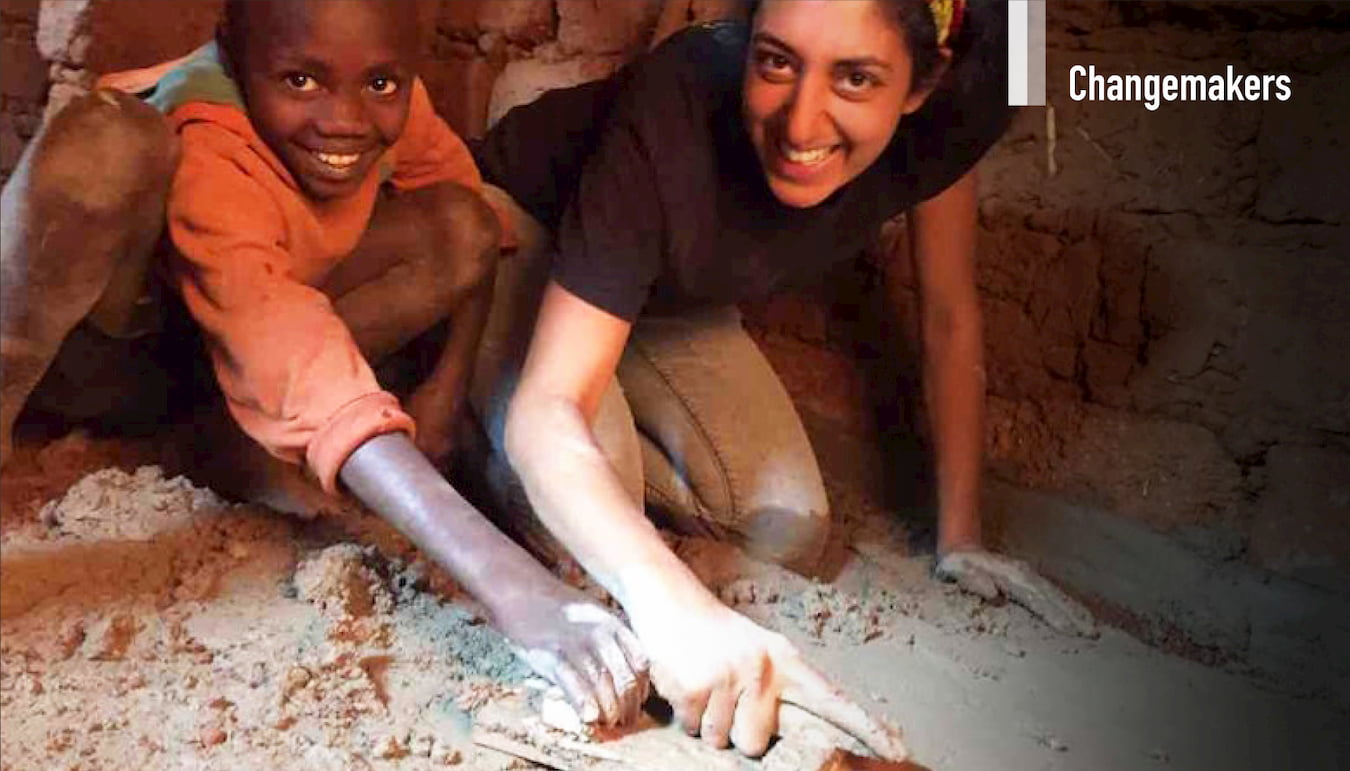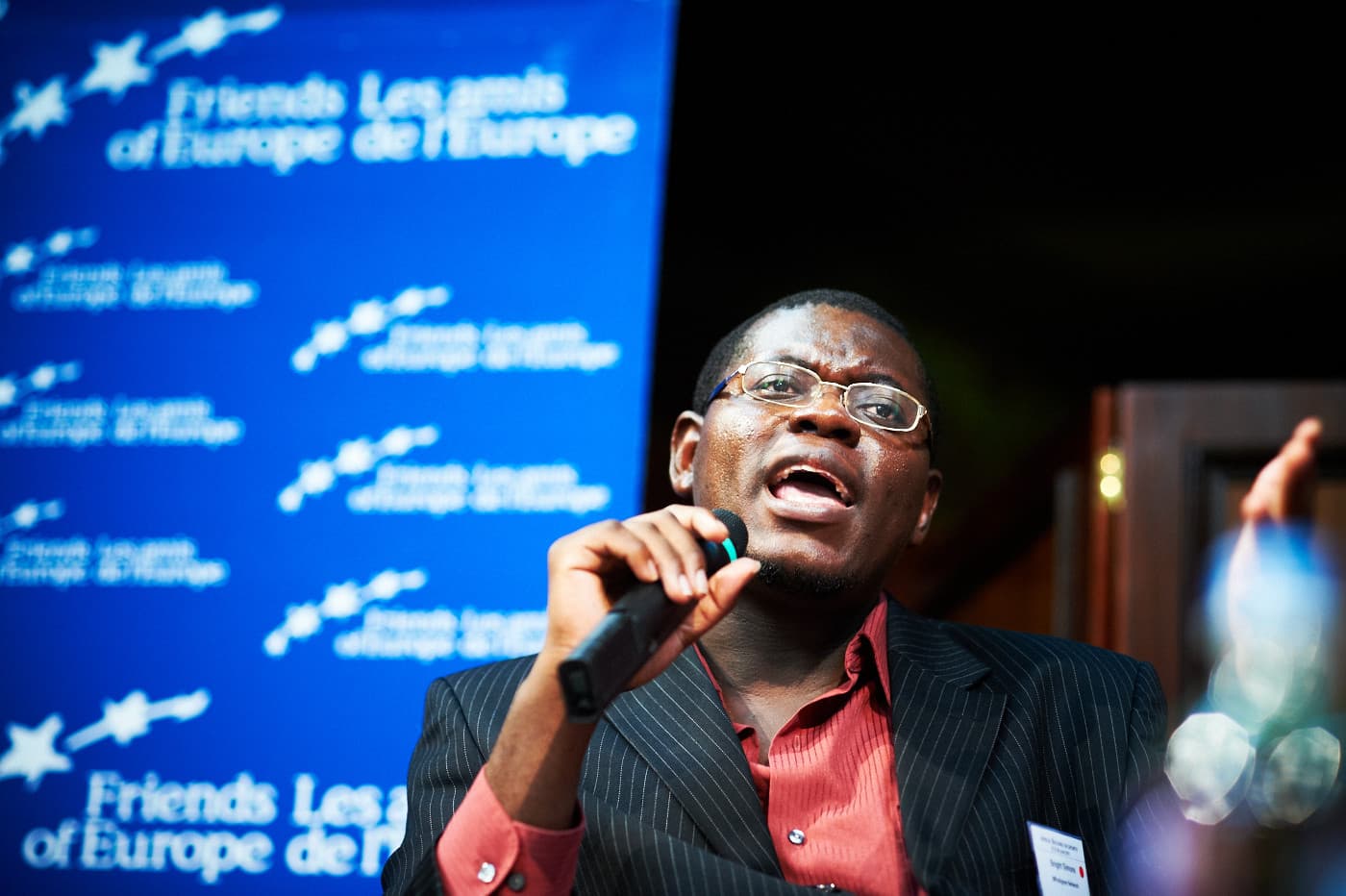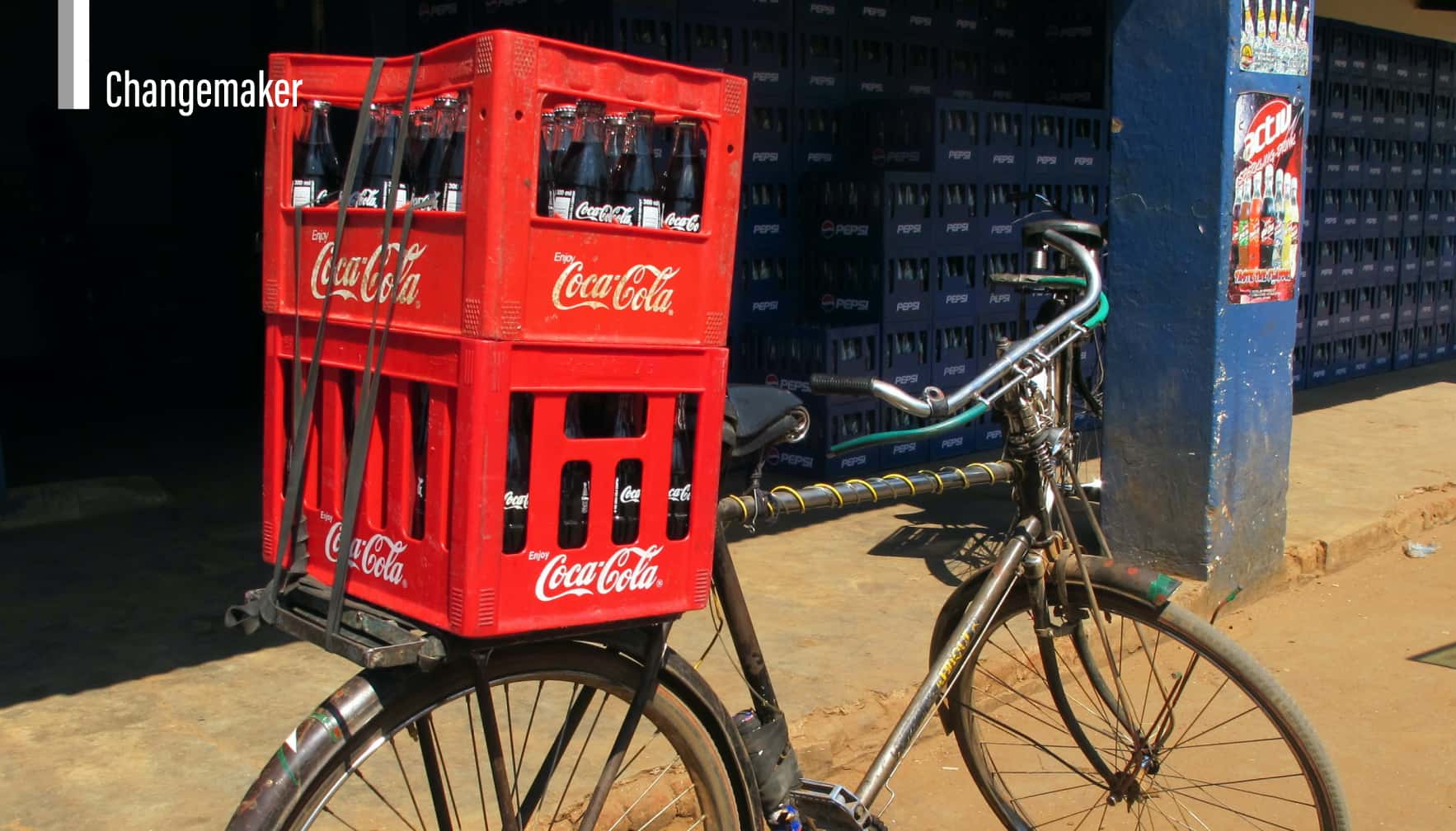“Everything you see is our market,” said Gayatri Datar, smiling, pointing at the wide farmlands expectantly.
On a cool May morning, Datar, the founder of EarthEnable, was driving through the countryside of Rwanda to visit clients. The engine buzzed through a tranquil village. Soon, the truck entered the even more tranquil farmland.
Children rushed out of their adobe huts, furiously waving at the truck. At this time in eastern Rwanda, the harvest festival had just begun. The truck driving through the farmland slowed down from time to time to give way to women with bundles of beanstalks on their heads or men on bicycles lugging bananas on their backs.
Seeing these sights, Datar was both excited and worried. Once the rainy season had passed, the harvest season had arrived. Soon these farmers would have money to spend. Last year, EarthEnable was not ready for this resulting wave of consumption and consequently missed out on potential sales. Datar was determined not to let it happen again this year.
A Storm Swirling from the Indian Ocean to Rwanda
Let’s go back in time to 2004. In that winter, a tsunami changed Datar’s life.
Being an Indian-American, Datar grew up in Boston, United States. She had only visited friends and family in India as a child. She remembers that all the people in her parents’ hometown were poor. Back then, she did not fully realize the extent of the poverty—not until the Indian Ocean earthquake.
In December 2004, a massive earthquake in the Indian Ocean devastated Southeast Asia and South Asia. The strongest earthquake since the turn of the millennium, it triggered a tsunami that caused the deaths of over 200,000 people in coastal areas. When the earthquake struck, Datar, a sophomore at Harvard University, was in India visiting her family, enjoying her Christmas break. After the tsunami, she went to the east coast to see the disaster with her own eyes.
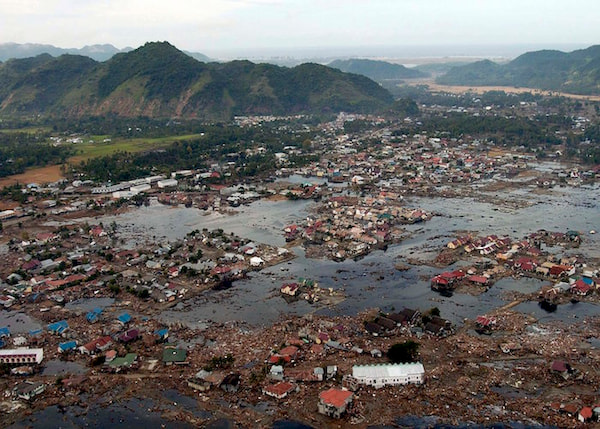
She spent a semester with NGOs, rebuilding her hometown. After she returned to Harvard, she became sickeningly aware of the ubiquitous elitism, and she pondered what changes she could make for the poor. Two years after graduation, she found her answer.
The idea of freeing a billion people from poverty forever is not impractical, but it would be a major endeavor. The most efficient way is to improve their life through business. Therefore, upon admission to the MBA program at Stanford University, Datar had only one goal: to learn business techniques and acquire the ability not only to help the poorest of the poor, but to help them on a large scale.
In 2013, Datar took a course titled, “How to solve problems through business design”. Datar and four others formed a team and adopted business approaches to address a poverty-related issue. This team later became the prototype of EarthEnable.
Their first target was Rwanda, a country in East Africa. In 1994, ethnic conflict led to massacres throughout Rwanda, devastating Rwanda’s economy. Afterwards, the nation attempted to earn foreign exchange by trading in coffee and tea, but as of 2014, two-thirds of its population still lived below the poverty line.
At first, Datar and her partners planned to improve upon the tin roofs common in Rwanda, which are often leaky. However, after they visited Rwanda during the rainy season, their plans changed completely.
Datar noticed that in many of the houses, mats covered the dirt floors. She helped a woman do laundry in a tub outdoors and then hang the laundry inside the house. If the clothes fell onto the dirt floor, she’d need to wash them again.
Datar asked this mother, “What do you want to improve?”
“Why is that a problem?”
“Leaks make the floor muddy.”
“Why is that a problem?”
“Once the floor is muddy, the bugs get inside.”
“Why is that a problem?”
“They bite my children.”
“Why is that a problem?”
“That’s what makes my children sick.”
This trip to Rwanda made Datar’s team realize that the fundamental problem was not the roof—it was the floor.
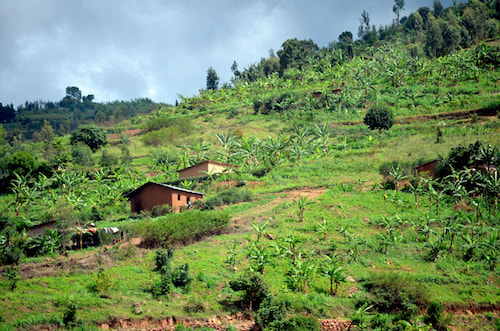
“For those who have to live and sleep on a dirt floor, it is clearly an unhygienic environment. In the dry season, the air is filled with dust, and the air quality is horrible. In the rainy season, the floor is covered with puddles, and mosquitos and other insects breed in them,” Datar recalled. “In fact, diarrhea is the main cause of death for children in developing countries. It spreads more easily in a house with mud floors. Because it is extremely difficult to clean mud floors, children often catch parasites while playing on the floor.”
When Datar and her partners returned to school, they changed their focus from the roof to the floor. But they soon encountered an obstacle. The simplest way to solve the problem of mud floors is to install concrete floors. However, concrete floors would be prohibitively expensive for Rwandans, and they are harmful to the environment. Rubber floors? No, too expensive. Bamboo? It lacks durability and thus disintegrates too easily.
For a month, Datar and her partners were frustrated, trying various means to find the most suitable flooring for people in Rwanda. Finally, they turned their focus to the cousin of Rwanda’s dirt floors: earthen floors.
The Key: Varnish
The earthen floor is a construction feature with a long history in the United States. It is a three-layer sealed floor made of natural construction materials. The bottom layer of the floor is laterite, which has high viscosity and is highly absorbent. The middle layer is polished fine sand and clay. The top layer is a waterproof varnish, which gives the floor a luster and is easy to clean.
Next to the common concrete floor, the earthen floor is affordable. It is also durable and causes less environmental pollution. However, there was still one problem: In the United States, traditionally, the material for the varnish coating of earthen floors was boiled linseed oil. Rwanda does not produce linseed. If they import linseed oil, it would increase the cost.
When Stanford course ended, Datar’s team had not completed their project. At this time, Datar asked Rick Zuzow, a biochemistry PhD candidate at Stanford, to see if he could develop a cheaper varnish.
“You know how they named Hurricanes after people?” Zuzow laughed, “Datar is why.” Another team member, Deng, said, “I remember not wanting to let her down.”
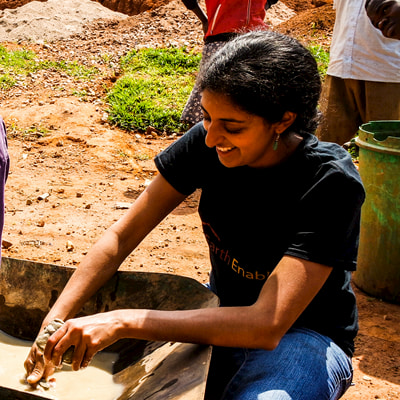
Clearly, Datar was determined to swipe away all obstacles, and she refused to take no for an answer. Fortunately, Zuzow came up with a plausible substitute and joined Datar’s team.
His solution was soy oil. It was cheaper than linseed oil, and Rwanda produces soy.
The problem of varnish was the last puzzle. Once it was solved, the picture was clear.
In 2013, Datar and three others founded EarthEnable and put their modified earthen floor on the market. Datar founded an office in Rwanda, hiring a group of locals to assist the company in purchasing cars and materials, and set out to establish marketing strategies.
The floor produced by EarthEnable was exactly what the Rwandan people needed. It could be washed easily, reducing the public health problems caused by dirt floors. Also, most materials were available locally, so it had a low carbon footprint and was sustainable. Most importantly, its total cost was approximately US$50, only a tenth of the cost of a concrete floor. When health is a luxury that only the rich can afford, at least the earthen floor gives the Rwandans some hope.
In the first year after EarthEnable was founded, 200 families bought new floors from them. But this was only the beginning.
Seeing the Poor as the Most Important Client
After they made some progress, they started to face challenges.
At first, Datar and her coworkers tried to keep up with the expansion of their business. They cultivated more bricklayers, but they could not keep up with the demand for earthen floor materials in Rwandan farming villages. Their manpower and logistics issues became increasingly difficult.
To address these issues, EarthEnable came up with a method to make the Rwandans self-sufficient. They trained the local people to independently source the materials for the earthen floors and to pave them on their own. This approach lowered the cost even further. Datar expressed the excitement that the entire company felt at Rwandans being able to improve their lives with their own hands.
“However, it didn’t go as smoothly as we expected,” Datar noted. Datar and her team discovered that after the Rwandans learned how to pave the floors, they still subcontracted the work to bricklayers unrelated to EarthEnable.
“People don’t really want to build the floors themselves. The fact is, their farm work alone leaves them exhausted. They lack the time and energy to pave the floors themselves.”
For this reason, EarthEnable changed their approach. They started developing a bricklayer evaluation system for the Rwandans to rate the bricklayers after they install their floors. EarthEnable compiles a list of outstanding bricklayers for people who need to find good local ones.
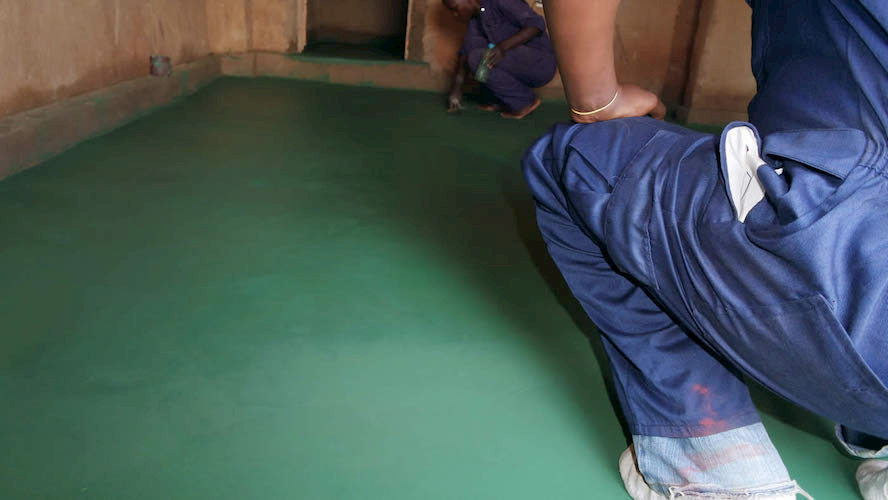
In addition, EarthEnable provides diverse projects based on farmers’ different conditions. The most popular project is one in which EarthEnable provides the materials, and the villagers find the bricklayers for installation. This project costs US$80. There are two other options, though. Having EarthEnable provide the entire installation costs US$150. For those who want to install the floors themselves, the cost is only that of the materials, US$50.
“We keep transforming, attempting, and innovating,” said Datar. “Seeing people as ‘clients’ instead of ‘beneficiaries’ completely changed our way of thinking.”
“Poor people are neither stupid nor lazy. They just don’t happen to have money,” says James M Patell, the emeritus Herbert Hoover Professor of Public and Private Management at Stanford GSB and founder of the Extreme course. that hatched EarthEnable “Poor people can smartly implement various economic options, including consumption. This does not mean they can draw the supply-and-demand curves. Rather, it means they are constantly making various tradeoffs every day. Poor people must understand which things are valuable, and how much they are willing to pay for them. Therefore, to solve their problems, you must treat them as clients, and as very smart ones.”
Seeing Rwandans as clients and having them pay for their own floors has two benefits. On one hand, it ensures that EarthEnable is responsible for the clients. On the other, it is a source of pride for the Rwandans, who can say, “I bought a new floor with the money I earned.”
“The feelings of being a ‘client’ and being a ‘beneficiary’ are totally different,” added Datar. “If they pay for a new floor, they are more likely to clean and maintain it more diligently. They will also feel they have the right to hold us responsible for the quality of the floor.”
Clearly, paying for it makes the new floor more valuable.
The Essence of a Social Enterprise Being an Enterprise
The success of EarthEnable delivers a clear message: What the poor need is not charity. For them, free is not necessarily good. Releasing the poor from being helped ones provides more possibilities. As a social enterprise, EarthEnable is the key to these possibilities.
In Taiwan, people often ask social enterprises, “Are you helping people or making money?”
Some people even raise more pointed questions: Does using capitalism’s market logic to resolve social injustices or social problems reinforce the value of using money to resolve problems? Aren’t many injustices in society caused by capitalism?
Such questions actually stem from confusion between anti-capitalism and anti-business sentiments. People have a long history of trading. However, various problems in contemporary society did not surface until the rise of capitalism in the 18th and 19th centuries.
EarthEnable’s approach is not to provide free new floors for Rwandans. Rather, it has developed a high-quality floor that they can afford. This disengaged the business from the capitalist model of seeking maximum profit for an individual and incorporated the values of fairness and justice. EarthEnable does not passively resolve social problems generated by economics and trade issues; it enters into economic and trade activities at the source to prevent these problems from occurring.
From now on, EarthEnable will continue to conduct social reform under the rules of the game in the market. As of January 2018, they have paved 51,496 m2—over 7 soccer fields of earthen floor. More than 1,878 families no longer live on dirt floors and can live healthier lives. In the future, EarthEnable plans to continue to expand their business in Rwanda and even extend their influence to Uganda and other East African countries.
Since we can’t overturn capitalism all at once, why not try to make more changes within the system?
A business organization that solves social, environmental, and welfare issues using its business model. For instance, a social enterprise may create jobs for the underprivileged and offer products or services that are socially responsible or eco-friendly. Profit made by social enterprises are used primarily for re-investment to continue solving social or environmental issues. Social enterprises do not work towards achieving maximum benefits for their investors or business owners.
